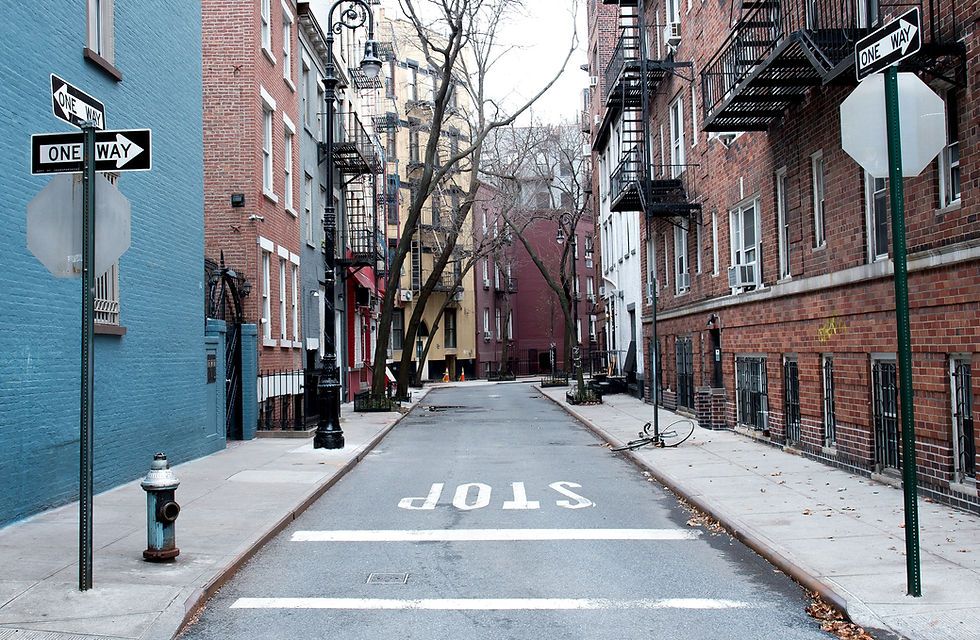Advice for First-Time Buyers in Brooklyn
- psych-media
- Jun 4, 2018
- 4 min read
Updated: Jul 13, 2018

It’s easy to see why so many first-time buyers are attracted to Brooklyn. It offers close proximity to Manhattan for commuters, a wide-range of neighborhoods from bustling commercial centers to quiet waterfront communities and varied architecture from quintessential brownstones to brand new luxury condos. But, many first-time buyers struggle with where to start.
Resources such as Brownstoner’s Home Events series with topics like “What First-Time Buyers Need to Know” are a great way to get informed. For those who didn’t make it to the event, you’re in luck. Elliman Insider asked Douglas Elliman Brooklyn agent Terry Robison, who sat on the panel of experts, to impart some of his wisdom on a few key aspects of first-time buying. Here are a few of his best tips.
Elliman Insider: How should first-time buyers begin their home search? What are the necessary steps to take before getting started?
Terry Robison: The first thing a potential buyer should do is go to their financial institution of choice and find out how much they can afford. This typically entails getting a pre-qualification letter from said institution. A buyer would need to provide paperwork like prior tax returns, proof of employment and such. What you come away with is an idea of what you can afford, which in turn helps define which neighborhoods to look at.
📷
EI: Where should first-time buyers concentrate their search in Brooklyn? Are there certain neighborhoods that have more modest price-points that encourage entry-level buyers?
TR: Brooklyn has a wide array of options for the first-time buyer, from bucolic brownstones to sweeping beach vistas. This variety also includes wide-ranging price points. For entry-level buyers who want the most bang for their buck, I would suggest the “Second Ring” of neighborhoods such as Bushwick, Bedford-Stuyvesant, Crown Heights, Prospect-Lefferts Gardens, Kensington and Sunset Park. These areas provide a vast array of options in housing stock, mass transit, shopping and proximity while still feeling uniquely “Brooklyn.”
Neighborhoods in the “First Ring” would be Brooklyn Heights, Park Slope, Williamsburg, Cobble Hill, Carroll Gardens, Fort Greene and Clinton Hill–all amazing neighborhoods but with higher price points overall.
📷
EI: What are the different home types available in Brooklyn?
TR: Brooklyn is a huge place. In fact, it would be the 4th largest city in the US if it were to be a city unto itself—cool, huh? Since it’s so large, it runs the spectrum of all types of housing.
Different neighborhoods feature different housing stock. For example, Bed-Stuy and Crown Heights feature the brownstone townhouses that are so beloved in NYC. Prospect-Lefferts Gardens and Sunset Park tend towards limestone townhouses, while Bushwick and Kensington feature more wood and brick homes. All these neighborhoods have co-op and condo apartments for sale within them.
📷
EI: Could you explain the difference between a co-op and a condo?
TR: A condo is an apartment that can be purchased like a house, in that it is “real property” that you have to pay your own taxes on, as well as a monthly common charge that contributes to the upkeep of the building as a whole.
In a co-op, you technically own shares in a corporation or cooperative, which is where the term co-op comes from. These shares translate to your apartment, but you don’t own it outright as you would a condo or a townhouse. You also pay maintenance instead of common charges and taxes. But, that maintenance includes your share of the taxes of the building so will always be higher than a comparable condo common charge.
📷
EI: How has serving as president of your co-op board helped you guide your clients in the co-op buying process?
TR: Being president of my co-op board has helped me in several ways. First and foremost, if I can figure out how to purchase an apartment in Brooklyn, so can you.
The stigma that co-ops are difficult to purchase into because of the board application process is blown out of proportion, in my opinion. The vast majority of co-ops are full of people like you and me who only want to be assured that any new resident of their building will hold up their end of the financial bargain. If a new resident isn’t able to do so, the burden falls directly onto the other co-op owners.
The board application asks for in-depth information in an attempt to determine if the potential new owner can follow through. Also, approximately 75% of apartments for sale in New York City are co-ops. Why rule out the majority of what is on the market? And condos, due to their relative scarcity, are more expensive for the same square footage.
📷
EI: Any other information you’d like to add that may be helpful to first-time buyers?
TR: Don’t give up! Even if you can’t afford the place of your dreams right now, assemble your information and your team of professionals—real estate agent, mortgage lender, real estate attorney—so that everything is in place for when you are able to throw your hat in the ring. And what better place to live out the American Dream of homeownership than in Brooklyn?



Comments